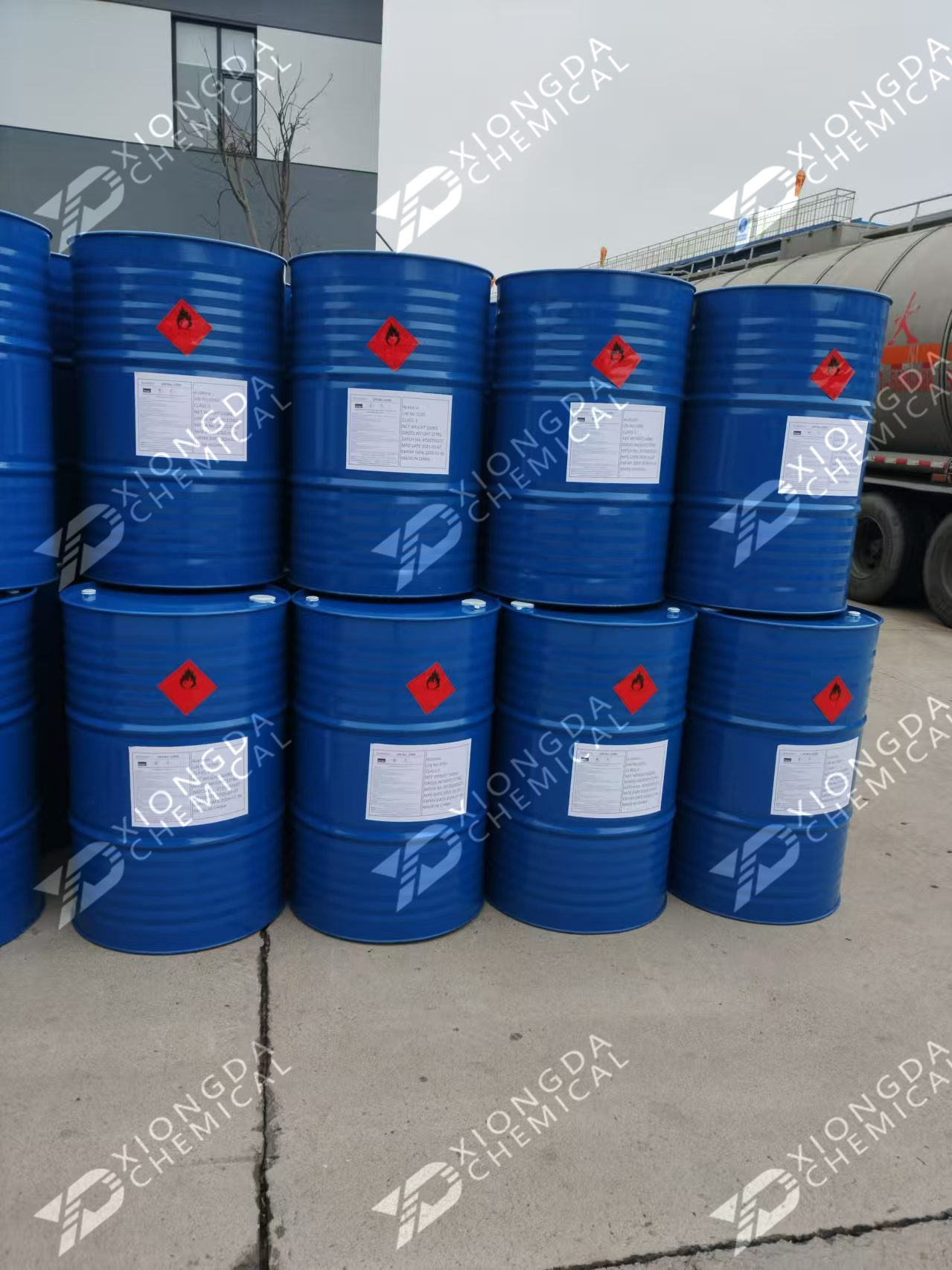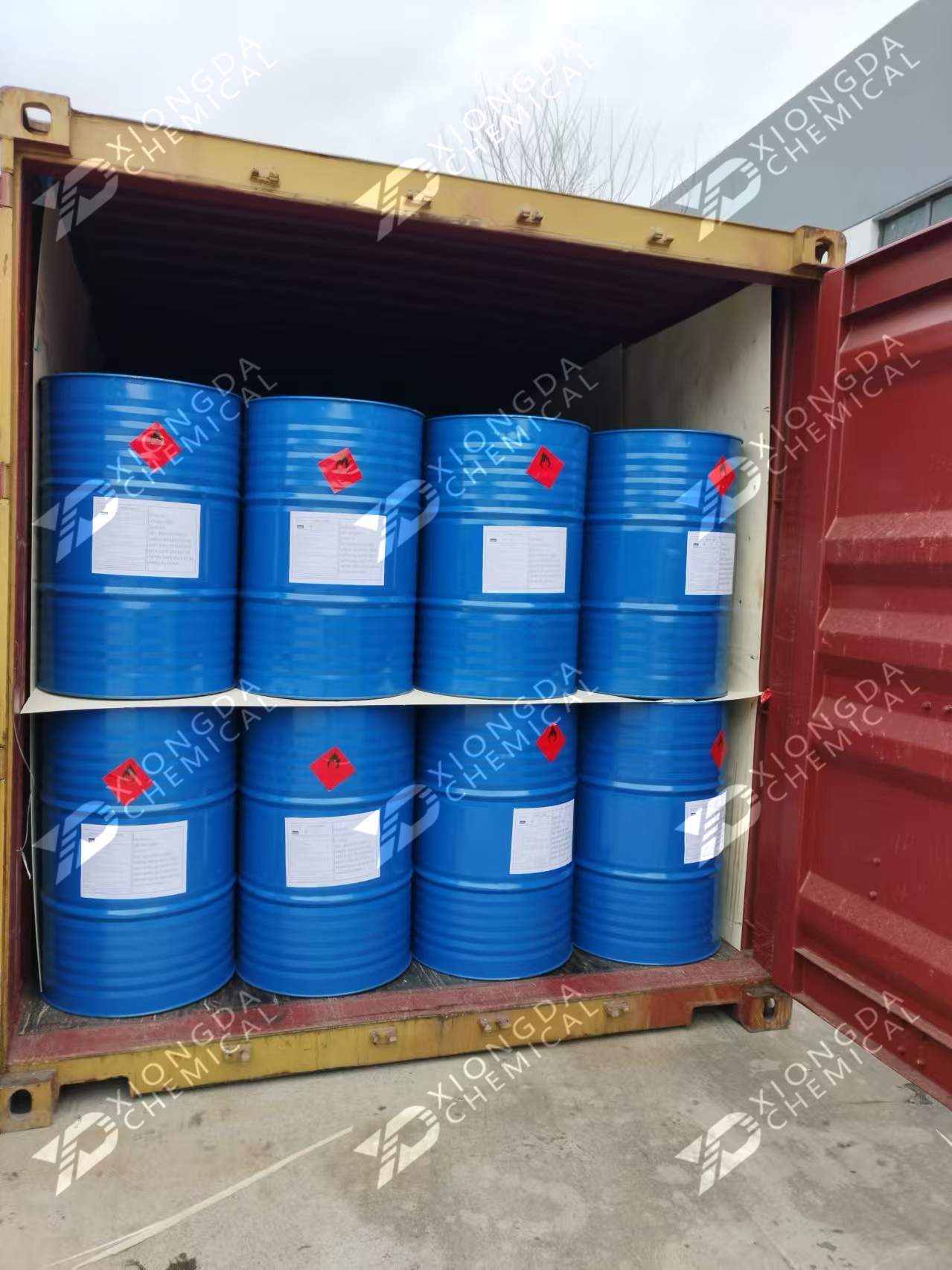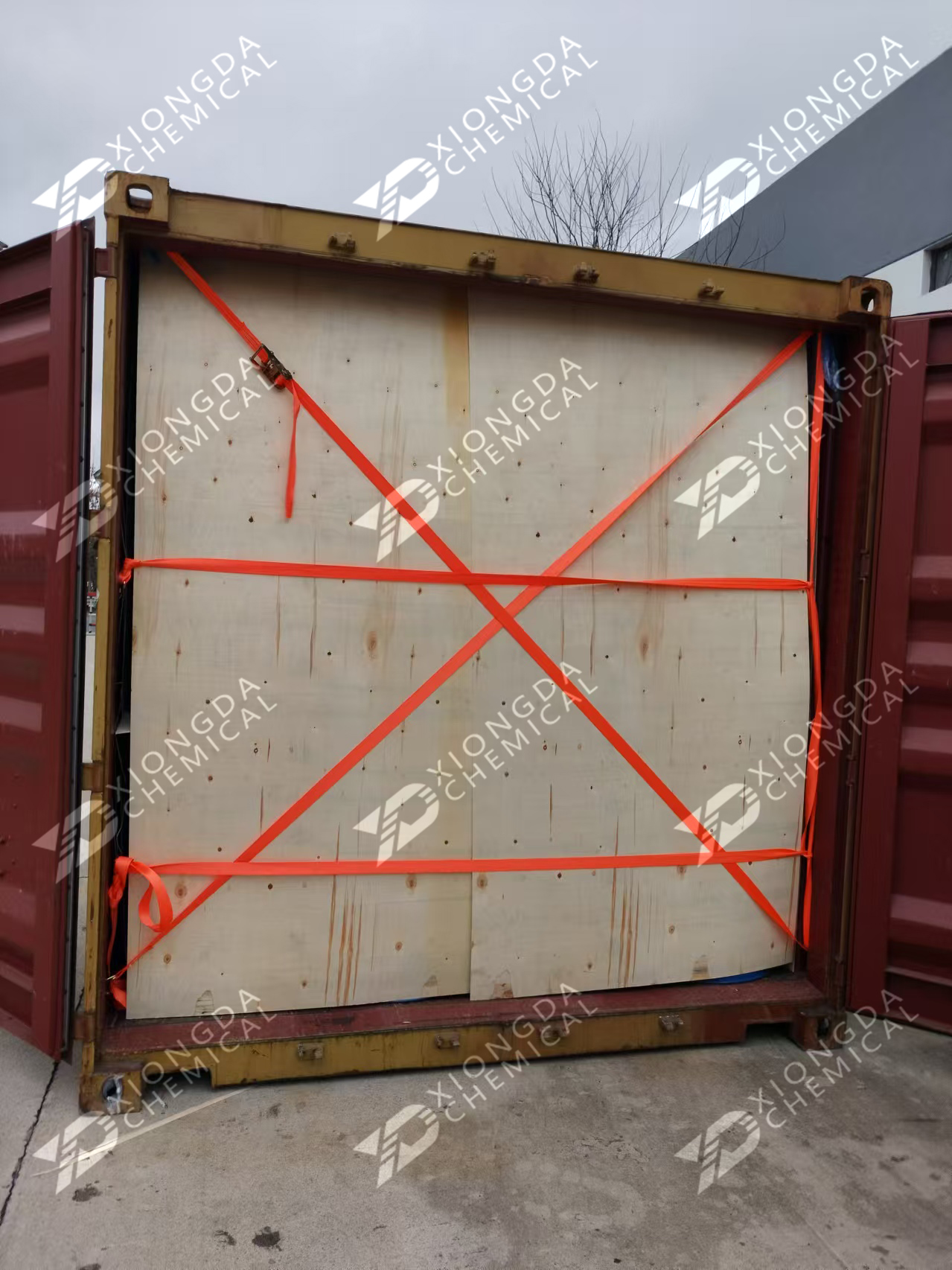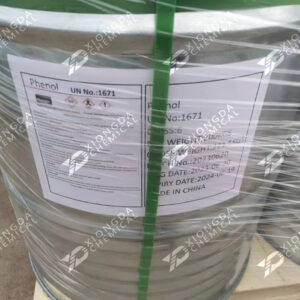Grade:
Industry: 99.5%
Electronic UPS: 99.9%, metal impurities<1ppm
Pharmaceutical: USP grade
Packing:
20KG/drum, 160KG/steel drum
Applications of Acetone:
Industrial Solvent – Acetone is widely used as a solvent in industries such as pharmaceuticals, plastics, and textiles due to its ability to dissolve many organic compounds.
Chemical Synthesis – It serves as a precursor for the production of chemicals like methyl methacrylate (MMA), bisphenol A (BPA), and various resins.
Cosmetics and Personal Care – Acetone is a key ingredient in nail polish removers and is also used in skin treatments and chemical peels.
Cleaning Agent – It is used as a degreaser for cleaning machinery, electronics, and laboratory equipment.
Paints and Coatings – Acetone is an effective thinner and remover for paints, varnishes, and adhesives.
Pharmaceuticals – It is utilized in the production of medications and as an excipient in drug formulations.
Automotive and Aerospace – Acetone is used in fuel additives, as a cleaning agent for engine parts, and in composite materials.
Laboratory Reagent – It is commonly used as a solvent and cleaning agent in scientific research and laboratories.
Textile Industry – Acetone is employed in the manufacturing of synthetic fibers like rayon and in dyeing processes.
Explosives and Pyrotechnics – It plays a role in the synthesis of certain explosive compounds.
Hazards identification
2.1 Classification of the substance or mixture
Flammable liquids, (Category 2) H225: Highly flammable liquid and vapor.
Eye irritation, (Category 2) H319: Causes serious eye irritation.
Specific target organ toxicity –
single exposure, (Category 3),
Respiratory system
H336: May cause drowsiness or dizziness.


Industrial Certificate of Analysis
| Product Name |
Acetone |
| Molecular Formula |
CH₃COCH₃ |
| Molecular Weight |
58.08 |
| Specification |
Industrial Grade |
| Batch Number |
2022103101 |
| Batch Quantity |
30T |
| Submitting Unit |
Production Department |
| Sample Category |
Organic |
| Report Date |
2022.11.02 |
| Test Basis |
GB/T 6026-2013 |
Test Results
| Test Item |
Standard Requirements |
Actual Results |
| Purity (%) |
≥99.5 |
99.7 |
| Appearance |
Transparent Liquid |
Transparent Liquid |
| Color (Pt-Co) (No.) |
≤5 |
≤5 |
| Density (20°C) (g/cm³) |
0.789 ~ 0.791 |
0.790 |
| Boiling Range (0°C, 101.3 kPa) (including 56.1°C) (°C) |
≤0.7 |
0.6 |
| Evaporation Residue (%) |
≤0.002 |
0.0008 |
| Acidity (as Acetic Acid) (%) |
≤0.002 |
0.0003 |
| Potassium Permanganate Test (25°C) (min) |
≥120 |
121 |
| Water Solubility |
Qualified |
Qualified |
| Water Content (%) |
≤0.30 |
0.20 |
| Methanol (%) |
≤0.05 |
0.02 |
| Arsenic (mg/kg) |
≤5 |
2 |
UPS Certificate of Analysis
| Product Name |
Acetone |
| Molecular Formula |
CH₃COCH₃ |
| Molecular Weight |
58.08 |
| Specification |
Electronic UPS Grade |
| Batch Number |
2025020701 |
| Batch Quantity |
500kg |
| Submitting Unit |
Production Department No.1 |
| Sample Category |
Organic |
| Report Date |
2025.02.10 |
| Inspection Standard |
Enterprise Standard |
Test Results
| Test Item |
Standard Requirement |
Measured Result |
| Purity (%) |
≥99.8 |
99.8 |
| Appearance |
Colorless transparent liquid |
Colorless transparent liquid |
| Color/Blackness Unit |
≤10 |
≤10 |
| Particles (≥0.5 μm) / mL |
≤10 |
≤10 |
| Particles (≥0.2 μm) / mL |
≤200 |
≤200 |
| Water Content (H₂O, %) |
≤0.2 |
0.08 |
| Acidity (as H⁺, mmol/g) |
≤0.0005 |
0.0001 |
| Water Solubility Test |
Pass |
Pass |
| Reducing Permanganate Substance |
Pass |
Pass |
Trace Metal Elements (ppb)
| Element |
Standard Requirement |
Measured Result |
| Sodium (Na) |
≤1 |
≤1 |
| Magnesium (Mg) |
≤1 |
≤1 |
| Aluminum (Al) |
≤1 |
≤1 |
| Potassium (K) |
≤1 |
≤1 |
| Calcium (Ca) |
≤1 |
≤1 |
| Chromium (Cr) |
≤1 |
≤1 |
| Iron (Fe) |
≤1 |
≤1 |
| Nickel (Ni) |
≤1 |
≤1 |
| Lithium (Li) |
≤1 |
≤1 |
| Zinc (Zn) |
≤1 |
≤1 |
| Titanium (Ti) |
≤1 |
≤1 |
| Manganese (Mn) |
≤1 |
≤1 |
| Cobalt (Co) |
≤1 |
≤1 |
| Copper (Cu) |
≤1 |
≤1 |
| Gallium (Ga) |
≤1 |
≤1 |
| Arsenic (As) |
≤1 |
≤1 |
| Thallium (Tl) |
≤1 |
≤1 |
| Cadmium (Cd) |
≤1 |
≤1 |
| Antimony (Sb) |
≤1 |
≤1 |
| Barium (Ba) |
≤1 |
≤1 |
| Gold (Au) |
≤1 |
≤1 |
| Lead (Pb) |
≤1 |
≤1 |
USP Certificate of Analysis
Inspection Report No.: CoA-FP008—2023/001
| Product Name |
Acetone (USP) |
| Identification Code |
F08 |
| Grade |
Pharmaceutical Excipient |
| Packaging Specification |
20kg/barrel |
| Batch Number |
F-231001 |
| Batch Quantity |
97 barrels |
| Inspection Department |
Please Inspect |
| Sampling |
4L |
| Sampling Date |
2023.11.01 |
| Inspection Date |
2023.11.01 |
| Report Date |
2023.11.30 |
| Inspection Standard |
USP42 |
Test Results
| Test Item |
Quality Standard |
Test Result |
| Appearance |
Clear, colorless liquid |
Clear, colorless liquid |
| Identification |
(1) Infrared absorption spectrum should match the reference spectrum |
Infrared absorption spectrum matches the reference spectrum |
|
(2) The retention time of the main peak in the sample solution should match the retention time of the acetone reference standard |
Complies |
| Specific Gravity (25°C) |
Not higher than 0.789 |
0.786 |
| Non-volatile Residue |
Residue weight should not exceed 2mg (0.004%) |
1.35mg |
| Volatile Impurities |
The high concentration chromaticity of the solution should not completely disappear within 15 minutes |
Complies |
| Water Content |
After removing air bubbles, the peak area of water in the sample solution should not be greater than 0.5% of the peak area of acetone solution |
Complies |
| Purity |
Acetone content should not be less than 99.0% |
99.82% |
| Microbial Limits |
Total aerobic microbial count should not exceed 10³ cfu/ml |
<1 cfu/ml |
|
Total yeast and mold count should not exceed 10² cfu/ml |
<1 cfu/ml |







